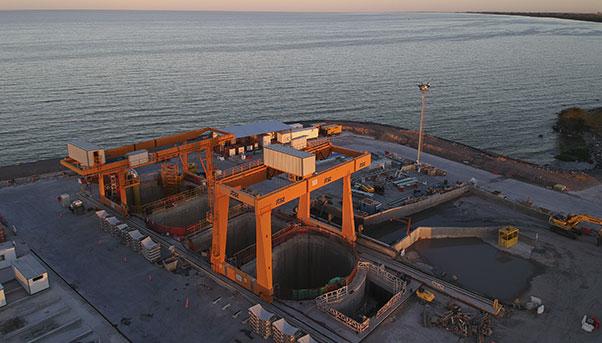
The stench from one of the most polluted rivers in the world is not as strong as it used to be.
Tanneries that dumped toxic chemicals into the Riachuelo in southern Buenos Aires for decades – if not centuries – have left its banks.
It has been 10 years since Argentina’s Supreme Court ordered the notorious river and wider Matanza-Riachuelo Basin be cleaned up, and the country’s biggest public works project is producing tangible results.
The Autoridad de Cuenca Matanza Riachuelo (ACUMAR), the public authority created to oversee the approximately $1.2-billion clean-up partly financed by the World Bank has inspectors roaming the basin and imposing fines on polluters. The authority is shutting down abusive factories, clearing garbage from the river and salvaging boat wrecks from its bottom.
And, most importantly, it is overseeing the installation of a sewage system with kilometres and kilometres of pipes and tunnels for the millions of inhabitants in the area who do not have toilets in their homes.
The latest initiative of this kind was announced on July 6, when ACUMAR President Dorina Bonetti joined Argentina’s undersecretary of urban development and housing, Iván Kerr, in inaugurating the second phase of the installation of sewage pipes in the San José Obrero neighbourhood in the district of Lanús. It will add 436 families to the sewage system after 200 were brought on line in May during the first phase.
Rather than dump their waste into open pits or ravines, the families will be able to flush it to a treatment plant. This will help reduce the amount of raw sewage that enters the waters. Despite the strong industrial presence in the basin area, 80% of the pollution of the Riachuelo is due to the dumping or discharge of human waste.
«This is an important project that substantially improves the quality of life of residents», Kerr said in a statement announcing the latest installation of sewage pipes. «We are very happy to be able to provide solutions to those who need them most».
Bonetti emphasized the importance of the latest initiative, explaining how about half of the residents in the basin area did not have access to a proper sewage system. «The limited access to this basic health service exposes a large part of the basin’s population to health risks», she said in the statement.
These risks are serious considering the fact that the basin hosts 23% of the residents of metropolitan Buenos Aires, or 9.16% of the country’s total population. Its waters extend for 64 kilometres through the capital city’s 14 municipalities, according to the newspaper, “El Cronista”.
And the damage that the pollution has caused to the health of many residents is evident. In Lanús, for instance, three out of every 10 people has dangerous levels of lead in their blood, according to the newspaper.
Another part of the clean-up is a $450-million hydraulic tunnel being excavated by a consortium led by Salini Impregilo that will flush into the River Plate waste water pre-treated by the plant being built. The River Plate is where the waters of the Matanza-Riachuelo Basin empty.
Since starting the tunnel works in 2017, the consortium has excavated more than two kilometres, more than 15% of its total length.
Once it will be completed at 12 kilometres in length, the tunnel will be one of the longest of its kind in the world. It will go 40 metres below the bed of the River Plate. The last 1.5 kilometres of the tunnel will be equipped with a series of steel tubes that will rise up to the riverbed, allowing for the treated water to exit.
The work, which has created some more than 300 jobs, is expected to be finished by 2021.
Photo credits: Salini Impregilo Image Library – Photo by Moreno Maggi

